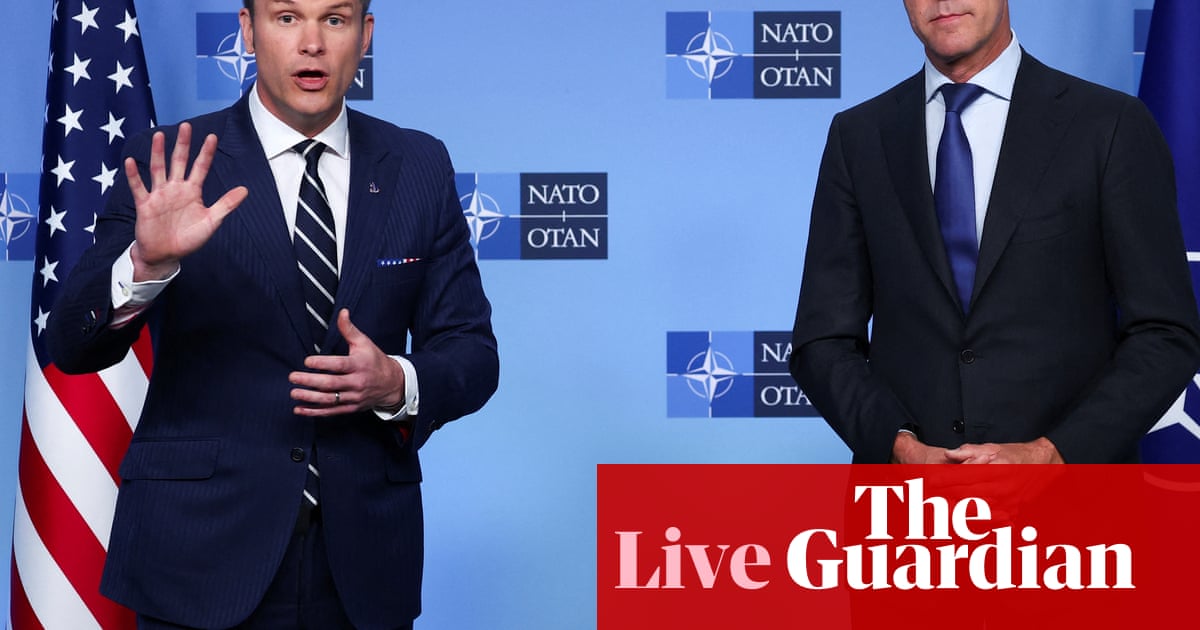BothSwedenandLatviaback raising defence spending to 5% of GDP among the nations in theNatoalliance.
Swedish defence ministerPål Jonsonsaid his country, whichjoined the alliance in 2024 after a nearly two-year waitdue to objections from Turkey and Hungary, would like to see Nato budgets at 5% of GDP by 2030.
Latvian defence ministerAndris Sprūds, Reuters reports, said the 5% figure was crucial if the alliance was to meet its new targets.
Germanywill need about 50,000 to 60,000 additional active troops under the new Nato targets, defence ministerBoris Pistoriussaid in Brussels this morning.Reuters reports that Pistorius said that Nato should make clear in its summit declaration that Russia is its greatest threat.
Ukraine’s defence minister said on Thursday that his country will receive up to €1.3bn for domestic weapons production in 2025 from allies after a conversation with his Danish counterpart.
The first tranche of €428m come from Denmark, Sweden, Canada, Norway and Iceland, Reuters reportsRustem Umerovsaid on the Telegram messaging app.
Nato secretary-generalMark Ruttesaid on Thursday morning that he expects allies to agree on what he called historic new capability targets at the defence ministers’ meeting in Brussels.
Reuters reports he said that the goal was to better balance defence contributions betweenEurope, Canada, and the US.
Rutte also said there is a need to boost spending on air defences, long-range missiles, land forces, and command and control systems. He said it would be a considerable extra investment.
A defence spending commitment of 5% of GDP across the Nato alliance will happen, US defence secretaryPete Hegsethtold reporters in Brussels, ahead of the Nato defence ministers meeting.
Reuters reports that Hegseth said that to be an alliance, you had to be combat-ready.
“We’re here to continue the work that President Trump started, which is a commitment to 5% defence spending across this alliance, which we think will happen. It has to happen by the summit at The Hague later this month,” he said.
Good morning and welcome to our rolling coverage ofEurope, where today the main focus to begin with is the Nato defence ministers meeting in Brussels. Here are the headlines …
A defence spending commitment of 5% of GDP across the Nato alliance will happen, US defense secretary Pete Hegseth has told reporters in Brussels
Nato’s secretary general Mark Rutte has said that new investment will equalise what the US, European nations and Canada have committed to spending. He said that Nato needed to invest in its capabilities to protect itself from being attacked
Germany’s new conservative leader,Friedrich Merz, is due in Washington on Thursday for his first official meeting with Donald Trump
